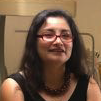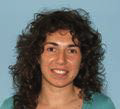The Barcelona Supercomputing Center (BSC-CNS) was established in 2005. It is the Spanish national supercomputing facility. Its mission is to research, develop and manage information technologies in order to facilitate scientific progress by combining expertise covering a wide range of High Performance Computing expertise. Following this approach, BSC has brought together a critical mass of first-rate researchers, high performance computing experts and cutting-edge supercomputing technologies in order to foster multidisciplinary scientific collaboration and innovation. The centre currently has over 500 staff from 41 countries.
BSC-CNS hosts MareNostrum, the most powerful supercomputer in Spain. After the last upgrade (2012-2013), MareNostrum has a peak performance of 1,1 Petaflops, with 48,896 Intel Sandy Bridge processors in 3,056 nodes, and 84 Xeon Phi 5110P in 42 nodes, with more than 104.6 TB of main memory and 2 PB of GPFS disk storage. As of June 2013, MareNostrum was positioned 29th in the TOP500 list of fastest supercomputers in the world. MareNostrum is managed by the Operations team that takes care of its availability, security and performance. An important task of this team is to support scientists in the usage of MareNostrum, as well as to help them in the improvement of their applications getting better research results. Marenostrum is also part of the PRACE Research Infrastructure as one of the 6 Tier-0 Systems currently available for European scientists.
BSC are leading WP2: Biomedical Research Activities, and heading the Development and Implementation of Multiscale and Workflow Interfaces. BSC has a unique combination of expertise, from hardware design to programming models, from simulation to visualization, from life sciences to engineering. Working together, BSC researchers develop HPC-based simulation tools capable of running efficiently on large supercomputers. The application department (CASE) creates simulation tools with a wide range of application domains. In particular, Biomechanics is one of the most active, with more than 20 researchers. In this project, the CASE department experts will coordinate WP2: Biomedical Research Activities, with a substantial contribution to WP6: Empowering Biomedical Applications.
Key Personnel
 Dr Mariano Vázquez – Has lead the BSC research team for High Performance Computational Mechanics (HPCM) since 2005. His team’s main task is to develop Computational Mechanics tools adapted to run efficiently in large-scale parallel computers. This involves physical modelling, Mathematical algorithms and code development and optimization, all with the strong constraint of efficient use of parallel resources. His team includes around 15 researchers (post-docs, PhD students and programming engineers). Together with Guillaume Houzeaux, MV is one of the two main architects of the Alya System, the in-house parallel multi-physics simulation tool. His main research lines fall within Computational Science, including computational bio-mechanics (particularly Solid Mechanics of organic tissue and Electrophysiology), compressible flows and stabilization issues in supersonic (external aerodynamics or combustion) and low-Mach regimes (mesoscale meteorology or automotive industry applications). He is also a scientist at the Spanish National Scientific Council (CSIC).
Dr Mariano Vázquez – Has lead the BSC research team for High Performance Computational Mechanics (HPCM) since 2005. His team’s main task is to develop Computational Mechanics tools adapted to run efficiently in large-scale parallel computers. This involves physical modelling, Mathematical algorithms and code development and optimization, all with the strong constraint of efficient use of parallel resources. His team includes around 15 researchers (post-docs, PhD students and programming engineers). Together with Guillaume Houzeaux, MV is one of the two main architects of the Alya System, the in-house parallel multi-physics simulation tool. His main research lines fall within Computational Science, including computational bio-mechanics (particularly Solid Mechanics of organic tissue and Electrophysiology), compressible flows and stabilization issues in supersonic (external aerodynamics or combustion) and low-Mach regimes (mesoscale meteorology or automotive industry applications). He is also a scientist at the Spanish National Scientific Council (CSIC).
 Dr Jazmin Aguado-Sierra – Post-Doctoral Researcher at the Department of Computer Applications in Science and Engineering at the Barcelona Supercomputing Center, at the HPCM Team. She received her PhD in Bioengineering from Imperial College London in 2008. She held a Post-Doctoral Position at the Cardiac Mechanics Research Group of the Bioengineering Department of the Unversity of California, San Diego from 2008 to 2011. Following a period at the Universitat Pompeu Fabra in Barcelona, she was a Visiting Academic at the University of Sheffield before starting her current position at the Barcelona Supercomputing Center in March 2012. Her main area of research is the mathematical modelling of the cardiac and vascular system.
Dr Jazmin Aguado-Sierra – Post-Doctoral Researcher at the Department of Computer Applications in Science and Engineering at the Barcelona Supercomputing Center, at the HPCM Team. She received her PhD in Bioengineering from Imperial College London in 2008. She held a Post-Doctoral Position at the Cardiac Mechanics Research Group of the Bioengineering Department of the Unversity of California, San Diego from 2008 to 2011. Following a period at the Universitat Pompeu Fabra in Barcelona, she was a Visiting Academic at the University of Sheffield before starting her current position at the Barcelona Supercomputing Center in March 2012. Her main area of research is the mathematical modelling of the cardiac and vascular system.
 Dr Alfonso Santiago – Recently completed his PhD on fully coupled fluid-electro-mechanical computational cardiac modelling at the BSC. He is post-doctoral fellow at BSC, where she works in the HPCM Team. His main lines are fluid-structure interaction, computational Cardiac Resynchronization Therapies and pacemaker deployment.
Dr Alfonso Santiago – Recently completed his PhD on fully coupled fluid-electro-mechanical computational cardiac modelling at the BSC. He is post-doctoral fellow at BSC, where she works in the HPCM Team. His main lines are fluid-structure interaction, computational Cardiac Resynchronization Therapies and pacemaker deployment.
 Dr Ruth Arís – PhD on computational cardiac modelling, post-doctoral researcher at the BSC, where she works in the HPCM Team. She works on image treatment for modelling, electromechanical coupling and anatomical cardiac descriptions. She is also mentor in the BSC doctoral programme, and will take a lead role on all referred to training.
Dr Ruth Arís – PhD on computational cardiac modelling, post-doctoral researcher at the BSC, where she works in the HPCM Team. She works on image treatment for modelling, electromechanical coupling and anatomical cardiac descriptions. She is also mentor in the BSC doctoral programme, and will take a lead role on all referred to training.
